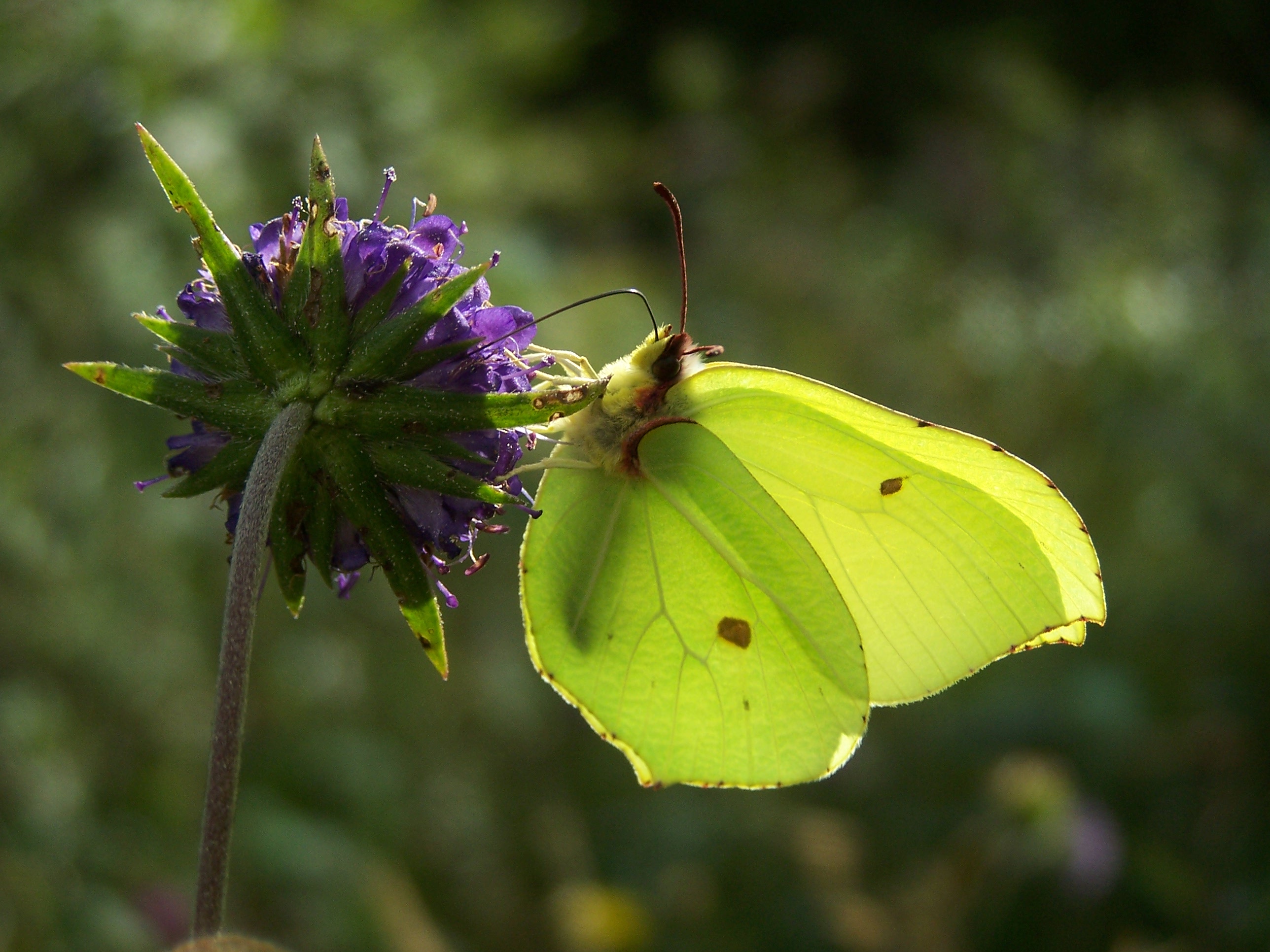The recent hot, sunny, dry spell (a very hot spell in an Irish context) with easterly breezes has coincided with the appearance of an abundance of Large Whites and Small Whites, probably a mixture of native-born and immigrant butterflies. We are also experiencing a good-sized emergence of Green-veined White butterflies and all three species can be found flying together. Where it occurs, the Brimstone mixes with the other white species, making for much confusion.
How do we separate these white butterflies?
The Green-veined White is a widespread species and is not known as a migrant. It is especially common in damp and wet grassland and along damp hedges and streams. It is similar in size to the Small White (wingspan is c. 40-52 mm in the Green-veined White, c.38-57mm in the Small White, according to Newland et al. (2015)), and will often occur with this species in gardens, where the Small White and Large White breed on Nasturtium and brassicas. When seen in flight these two are very hard to separate.
The male of both species has one spot on the upper side of the forewing, while the female of both species has two spots on the upper side of the forewing. However, when settled, the Green-veined White shows a dusting of dark scales along the veins on the upper sides and undersides of the wings. A more subtle change is the ground colour of the upper sides of the wings. The Small White has a milkier appearance while the Green-veined white is a clearer, brighter white, especially in the male.
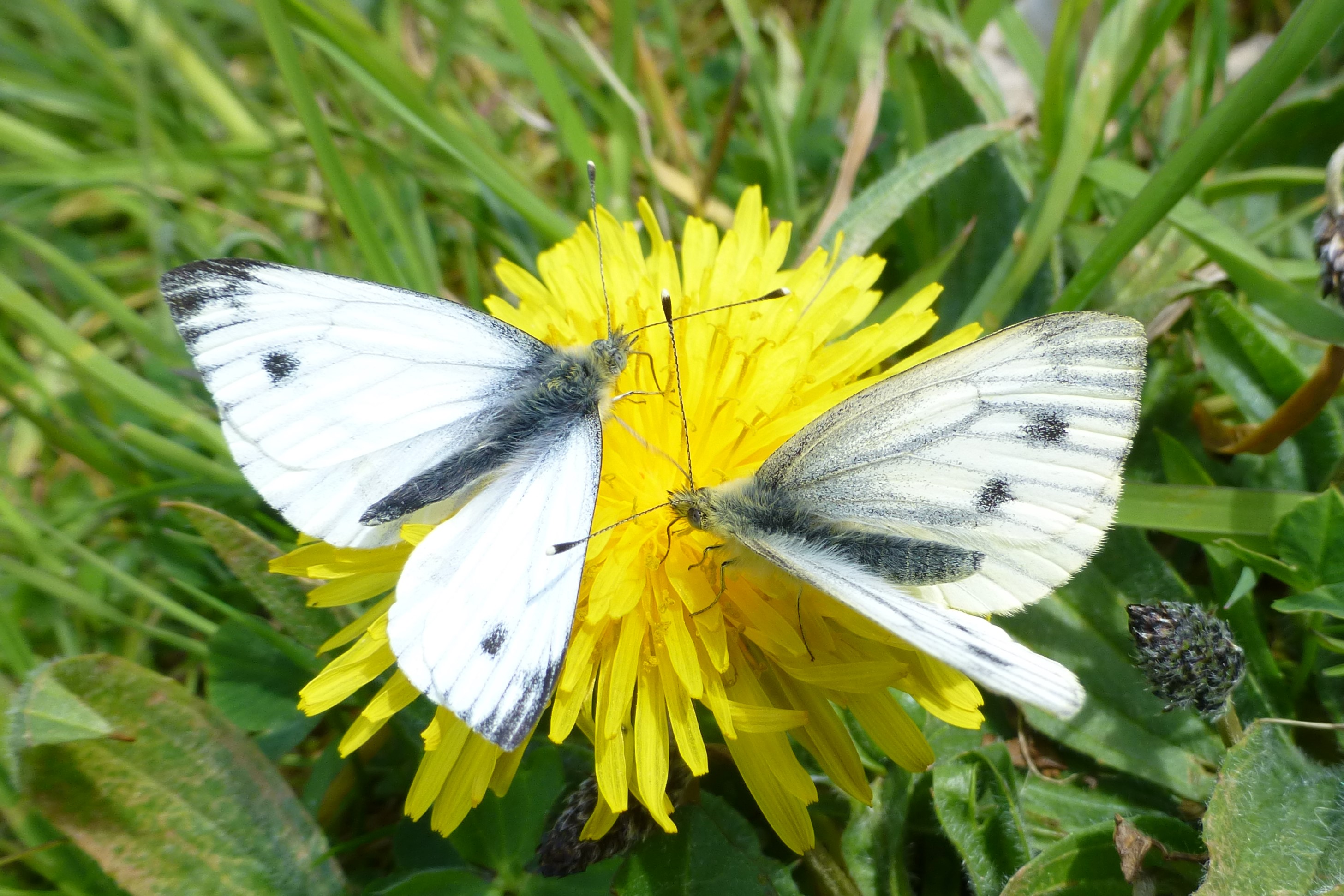
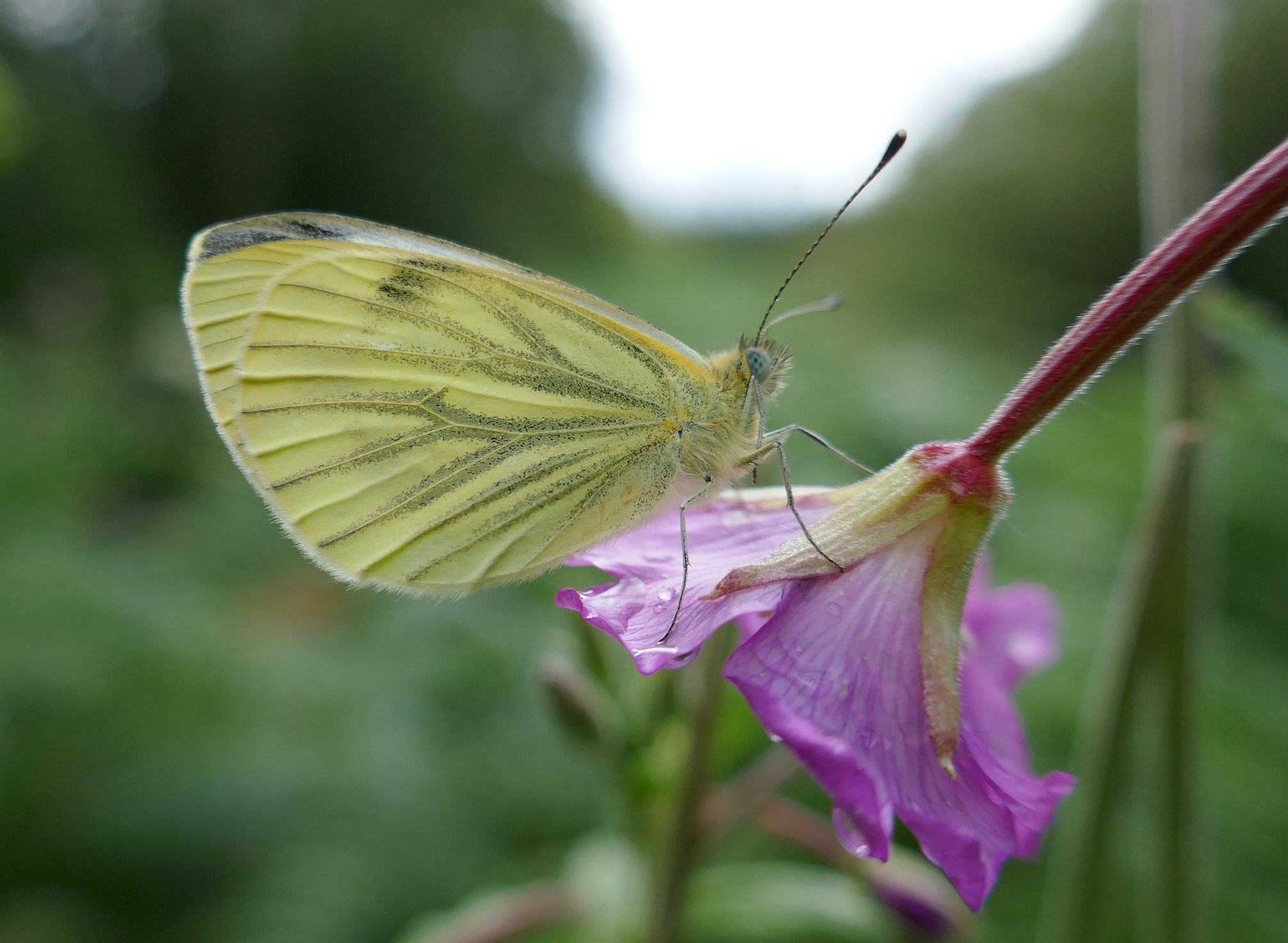

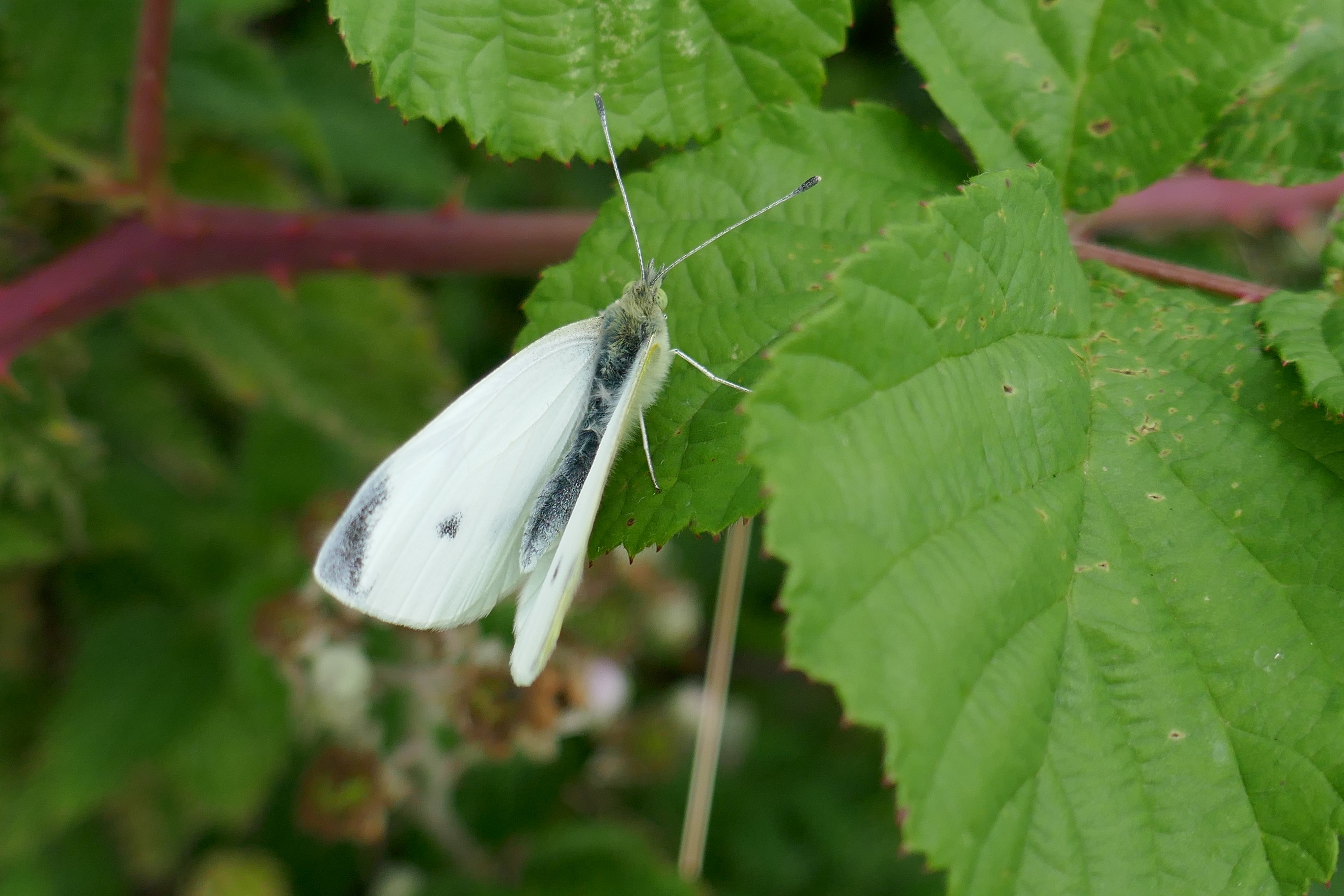
The Large White is appreciably larger than the Small and Green-veined Whites (Newland et al. (2015) give a wingspan of 58mm in the male and 63 mm in the female but much larger specimens are very common; a female I measured recently had a wingspan of 72mm) but smaller specimens of the Large White also occur. In addition, a butterfly in flight seen on its own will present identification difficulties. When settled, identification is simple especially when the wings are held open. The Large White, in both sexes, has a much more extensive black wing-tip that extends much further along the outer and inner edges of the forewing than in the Small White.
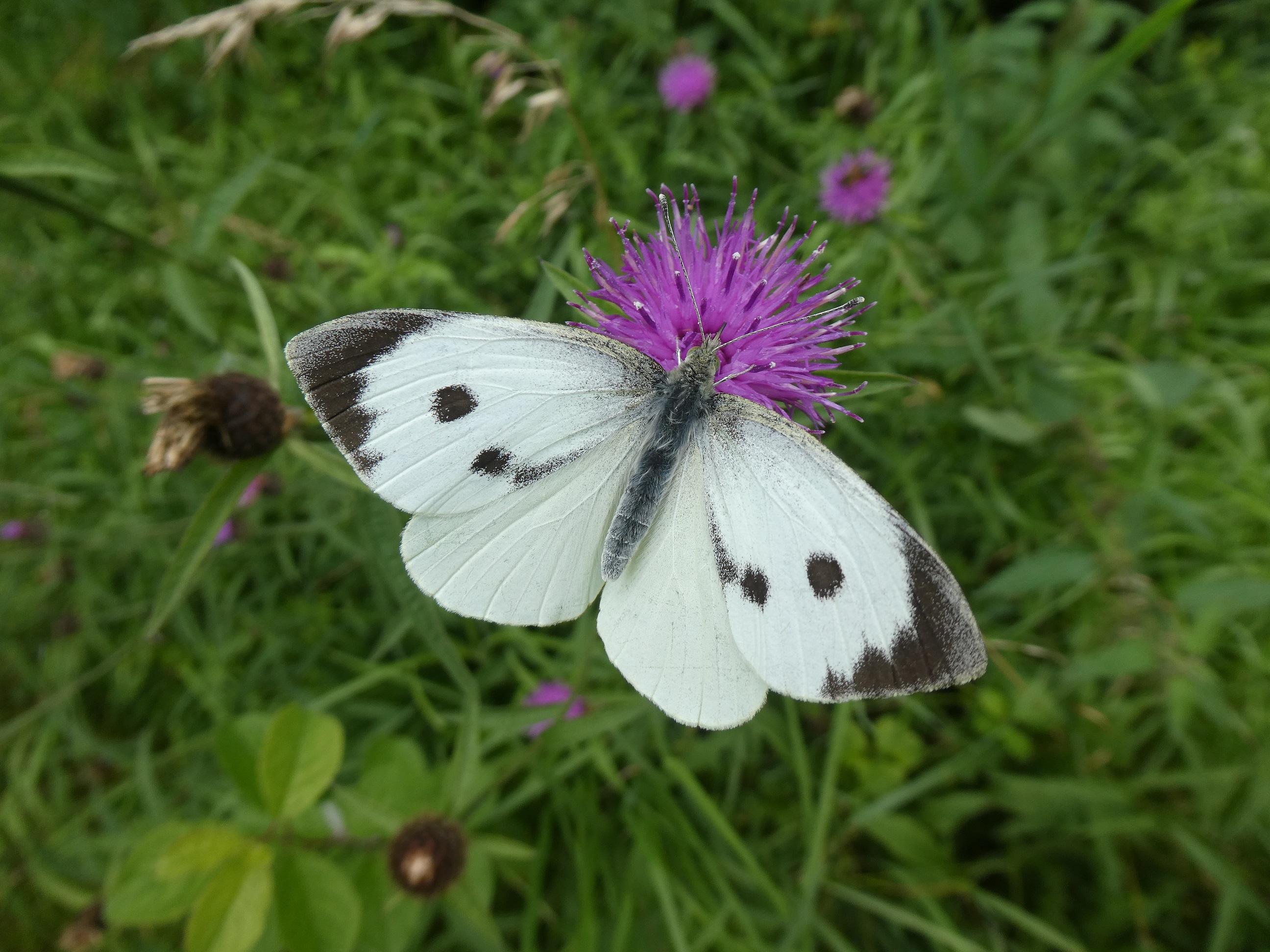

There may be confusion between Large and Small White males when these are settled with closed wings. Here are photos of both.
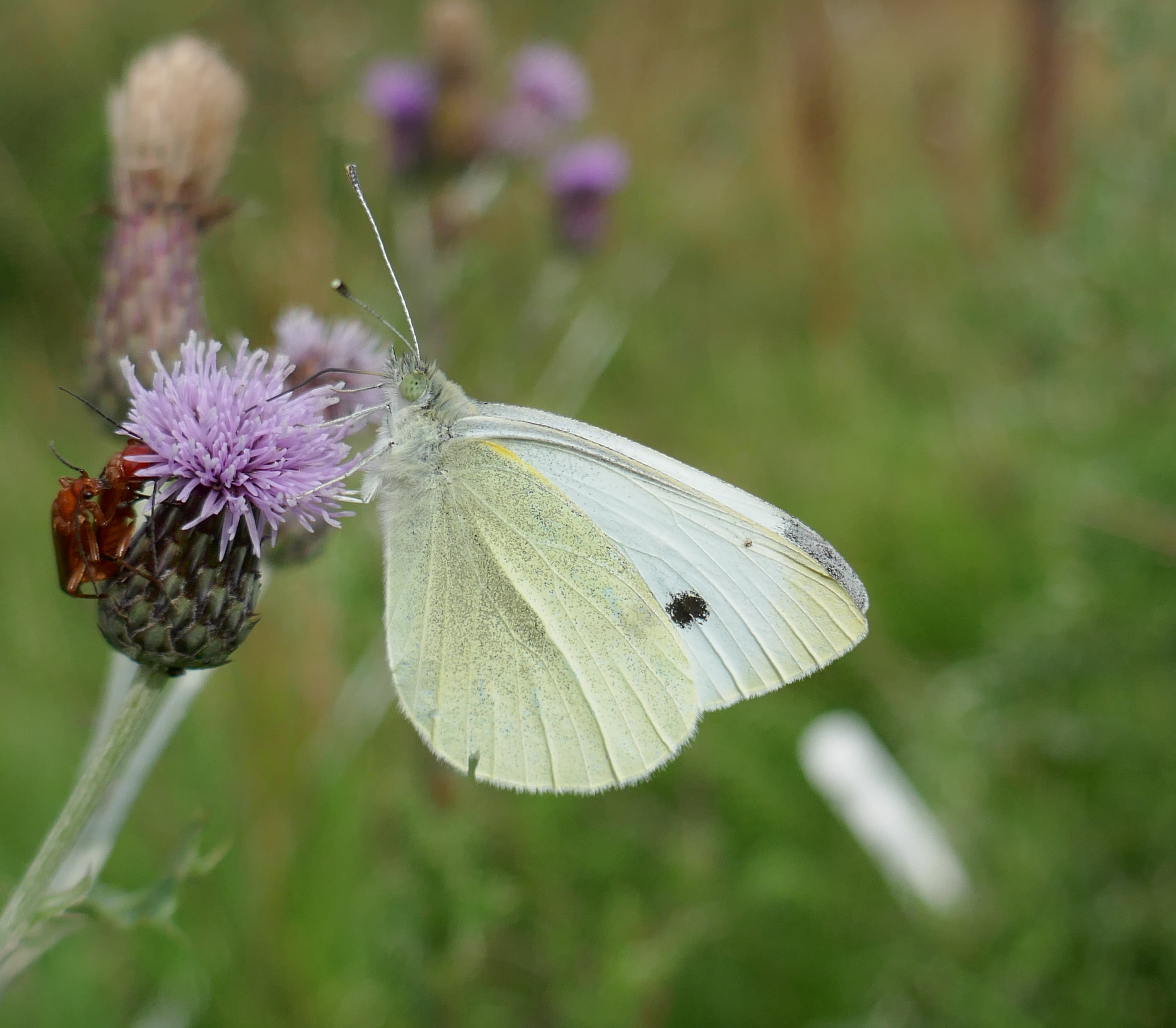
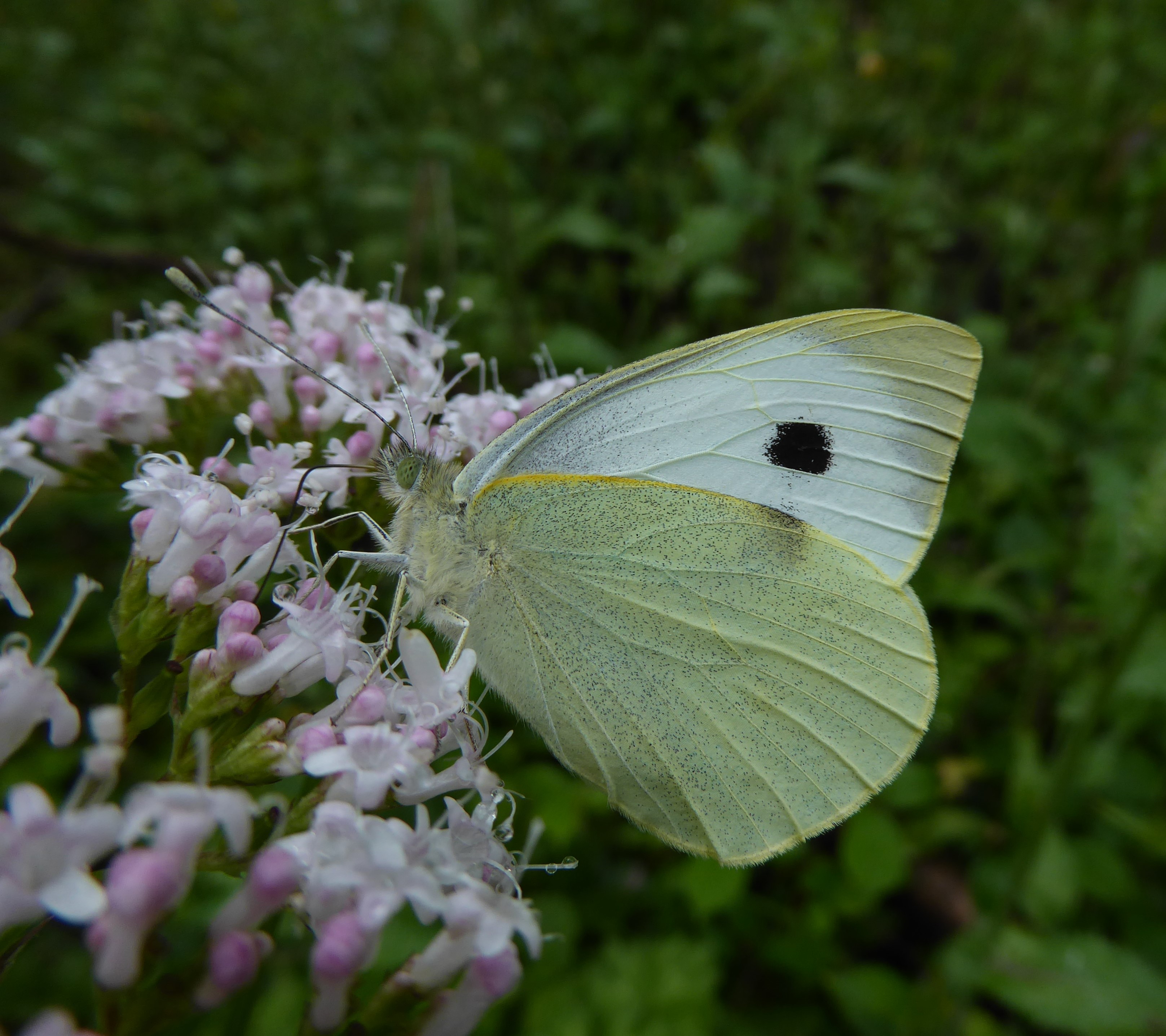
The separation features in the settled Large and Small White, apart from the size of these butterflies, lies in the larger size and squarer appearance of the spot in the Large White. A further separation feature is that the yellow costa (outer margin) on the hindwing extends further along the costa in the Large White.
Another white flying now, the Brimstone, can be confused with the Large White, being similar in size and overall colour, especially when seen in flight in sunny conditions. However, it is only the female Brimstone that can be confused with the Large White because the male Brimstone, true to its name, is sulphur-yellow but the female is a pale greenish-white.
Unlike the Large White, the Brimstone almost always settles with closed wings. Furthermore, she has no black markings on her wings and has a pointed apex on the forewing. She also has dull red markings on the thorax and the base of the hindwing and dull red antennae. The Brimstone is much rarer than the other whites but all whites can be found in areas occupied by the Brimstone.

The male Brimstone, being yellow, is not a confusion risk, but we cannot resist showing you a photo of this handsome butterfly.
